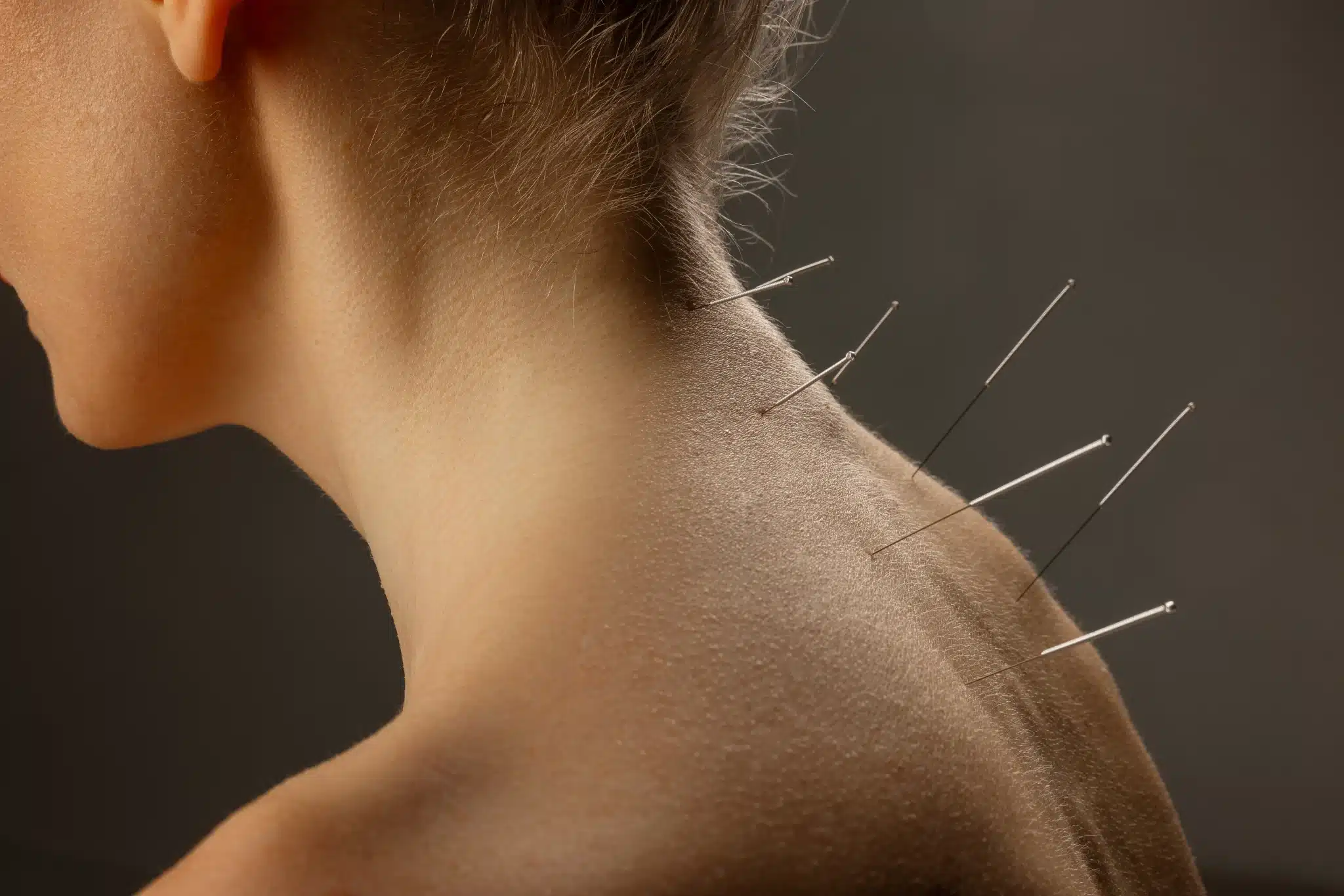
Picture this: you're sitting at your desk when suddenly a sharp pain shoots from your lower back down your leg. Feels like someone just zapped you with electricity, right? That's probably lumbar radiculopathy - and doctors have a special code for it: M54.16.
Having trouble with M54.16 billing at your practice? We help massage therapists, acupuncturists, and chiropractors get paid faster with fewer claim denials. Let's talk about fixing your billing headaches once and for all.
Here's something that might surprise you: 8 out of 10 people will deal with back pain at some point. The cost? Over $50 billion every year just in America. That's a lot of hurting backs and medical bills.
So what's the deal with this M54.16 thing? We're going to break it down in plain English. No medical jargon, no confusing terms - just the facts you need to know.
What's M54.16 Really About?
M54.16 is doctor-speak for "your lower back nerve is acting up." More specifically, it means "Radiculopathy, lumbar region" in medical coding language. Think of it as the official name tag for when nerves in your lower spine get cranky.
Your lower back has five bones stacked up (doctors call them L1 through L5). When something squeezes the nerves coming out of these bones, you get radiculopathy. It's like stepping on a garden hose - the water (or in this case, nerve signals) can't flow right.
This code has been around since October 2015. Medical folks use it worldwide to describe this exact problem. The World Health Organization put it in their big book of medical conditions under spine and muscle problems.
What Makes This Different from Regular Back Pain?
| Regular Back Pain | M54.16 Radiculopathy |
|---|---|
| Stays in your back | Travels down your leg |
| Dull, aching feeling | Sharp, electric-like pain |
| Muscle-related | Nerve-related |
| Usually gets better with rest | May worsen with sitting |
Think about the difference between a bruised muscle and a pinched nerve. One aches, the other screams at you.
How Do You Know If You Have It?
Lumbar radiculopathy doesn't mess around. It announces itself pretty loudly with some telltale signs that are hard to ignore.
The pain feels like:
- Lightning bolts shooting down your leg
- Someone's holding a hot iron to your skin
- Electric shocks when you move wrong
- Fire running down the back of your thigh
Other weird stuff that happens:
- Your leg goes numb in spots
- Pins and needles like your foot fell asleep
- Your leg feels weak when you try to lift it
- You can't feel the doctor tapping your knee
Each nerve creates its own pattern of problems. If the L4 nerve gets pinched, you'll feel it down the front of your thigh. L5 problems hit the side of your leg and top of your foot. S1 (technically not lumbar, but close) affects the back of your thigh and outer foot.
Most people only get it on one side. When both legs hurt, that's usually something more serious going on.
Tired of insurance companies rejecting your M54.16 claims? Our billing experts know exactly what documentation gets approved. Get help now and stop losing money on paperwork problems.
When Doctors Use This Code
Doctors don't just slap this code on any old back pain. They need proof that your nerves are actually involved, not just your muscles complaining.
Here's what they look for:
- Pain that follows a specific nerve path
- Numbness or tingling in exact spots
- Weakness in certain muscles
- Changes in your reflexes
Tests that help confirm it:
- MRI scans showing pinched nerves
- EMG tests that check nerve signals
- Physical tests like the straight leg raise
- Checking if your reflexes work right
Different types of doctors use this code. Your family doctor might spot it first. Spine specialists and neurologists handle the tricky cases. Physical therapists, chiropractors, and other practitioners treat it and use this code for billing.
Some cases happen fast (like from an injury). Others sneak up on you over months or years as your spine wears down.
How M54.16 Differs from Similar Codes
Getting the right code matters for treatment and insurance:
| Code | What It Means | The Difference |
|---|---|---|
| M54.16 | General nerve problem | No specific cause identified |
| M51.16 | Disc pressing on nerve | Disc is the clear culprit |
| M54.4- | Sciatica pain | Sciatic nerve specifically |
| M47.2- | Arthritis causing nerve pain | Bone spurs are the problem |
What Doctors Need to Write Down
Insurance companies are picky about paperwork. Really picky. If doctors don't document things just right, claims get denied and patients get stuck with bills.
Must-have information:
- Your full name and when you were seen
- Exactly what hurts and how long it's been going on
- What the doctor found during your exam
- Any test results like MRIs or X-rays
- The treatment plan and why it's necessary
Pain details that matter:
- Where it starts (lower back)
- Where it goes (down your leg)
- What it feels like (sharp, burning, electric)
- How bad it is (scale of 1-10)
- When it happens (all the time or just sometimes)
Nerve problem signs to record:
- Which specific areas are numb or tingly
- What muscles are weak
- How your reflexes are working
- What you can't do because of the pain
Good documentation protects both you and your doctor. It ensures proper treatment and prevents insurance hassles down the road.
Money Matters: Insurance and Billing
The M54.16 code affects how much doctors get paid and what you might owe. Understanding this helps you navigate the financial side of healthcare better.
Common treatments and their costs:
| Treatment | What It Is | Typical Cost Range |
|---|---|---|
| Epidural injection | Steroid shot in your spine | $400-$800 |
| Physical therapy | Exercise and movement training | $25-$70 per visit |
| Chiropractic care | Spine adjustments | $30-$75 per visit |
| Doctor visit | Office consultation | $75-$150 |
Insurance companies pay different amounts. Medicare usually pays less than private insurance. Medicaid often pays the least. Where you live also affects how much things cost.
Payment depends on where you get treated:
- Hospital outpatient: Most expensive
- Doctor's office: Middle range
- Therapy clinic: Less expensive
- Home health: Varies widely
Some treatments need pre-approval from insurance. Injections and advanced therapy often require permission first. Basic treatments like physical therapy usually don't need advance approval.
Treatment Options That Actually Work

Good news: most people with M54.16 get better without surgery. The key is finding the right combination of treatments that work for your situation.
Conservative treatments to try first:
- Physical therapy to strengthen your back
- Anti-inflammatory medications for pain and swelling
- Chiropractic adjustments to improve spine alignment
- Acupuncture for natural pain relief
Stronger treatments for stubborn cases:
- Steroid injections directly into the problem area
- Nerve blocks to stop pain signals
- Radiofrequency treatment to "turn off" pain nerves
- Surgery (only when nothing else helps)
Alternative approaches gaining popularity:
- Massage therapy to relax tight muscles
- Acupuncture for drug-free pain control
- Yoga and stretching for flexibility
- Nutrition changes to reduce inflammation
Most folks start feeling better within 6-12 weeks with the right treatment. Some people need ongoing care to keep symptoms under control. The trick is matching the treatment intensity to how bad your symptoms are.
Doctors usually start gentle and work up to stronger treatments if needed. This approach gives you the best chance of getting better while avoiding unnecessary risks and costs.
Want to maximize your M54.16 reimbursement without the billing hassles? We specialize in helping holistic practitioners get paid what they deserve. Start improving your cash flow with our proven billing solutions.
Common Mistakes That Cost Money
Healthcare providers make coding errors all the time. These mistakes lead to denied claims and frustrated patients. Knowing what goes wrong helps everyone avoid these problems.
Documentation mistakes that hurt:
- Not writing down enough detail about symptoms
- Skipping the neurological exam findings
- Being vague about pain descriptions
- Forgetting to mention how it affects daily life
Wrong code choices:
- Using M54.16 when a disc problem is obvious (should use M51.16)
- Mixing up nerve pain with regular back pain
- Ignoring the "don't use with" rules
- Getting lumbar and lumbosacral codes confused
Billing process problems:
- Sending claims without getting approval first
- Pairing the wrong treatment codes together
- Missing required modifiers
- Not explaining why treatment is medically necessary
How to prevent these issues:
- Train staff regularly on coding updates
- Use templates to ensure consistency
- Review everything before submitting
- Stay updated on insurance company requirements
Insurance audits often target M54.16 cases because they're so common. Good documentation and correct coding protect against audit problems and financial penalties.
What's New for 2025
The medical coding world keeps changing. The 2025 updates affect how M54.16 gets used and what insurance companies expect.
Big changes this year:
- Insurance wants more detailed documentation
- Stricter rules about medical necessity
- Updated guidelines about related codes
- New codes for similar conditions
Documentation gets tougher: Insurance companies now want specific neurological findings, not just "patient has back pain." Providers must document exactly what they found during the exam.
Technology helps: Electronic medical records now have better templates for documenting M54.16 cases. These tools help ensure all required information gets captured.
Quality tracking: Healthcare systems are tracking how well M54.16 patients do with different treatments. This data influences future treatment guidelines and payment decisions.
Staying ahead of these changes requires ongoing education and system updates. Healthcare providers who adapt quickly maintain better payment rates and avoid compliance problems.
Making Sense of It All
Here's the bottom line: M54.16 is the medical code for when nerves in your lower back act up and cause pain down your leg. It's more than just regular back pain - it's a specific nerve problem that needs specific treatment.
If you're a patient, now you know what your diagnosis means and what treatment options exist. You understand why certain tests matter and how insurance fits into the picture.
If you're a healthcare provider, you have the information needed for accurate coding and proper reimbursement. The financial stakes are high, so getting it right matters.
Every M54.16 code represents someone dealing with real pain that affects their daily life. Good coding ensures they get appropriate treatment while keeping healthcare practices financially viable.
The healthcare world keeps evolving, but good documentation and accurate coding remain essential. These practices benefit everyone - patients get better care, and providers get paid fairly for their work.
Success with M54.16 requires attention to both clinical details and paperwork precision. Master both, and you'll navigate this complex system successfully.





